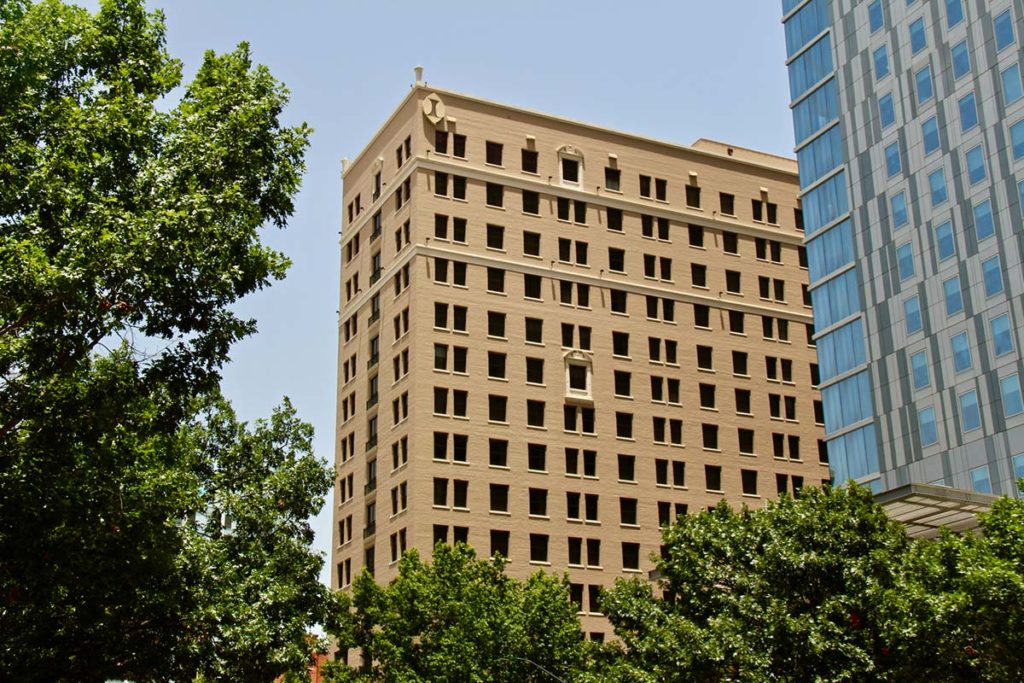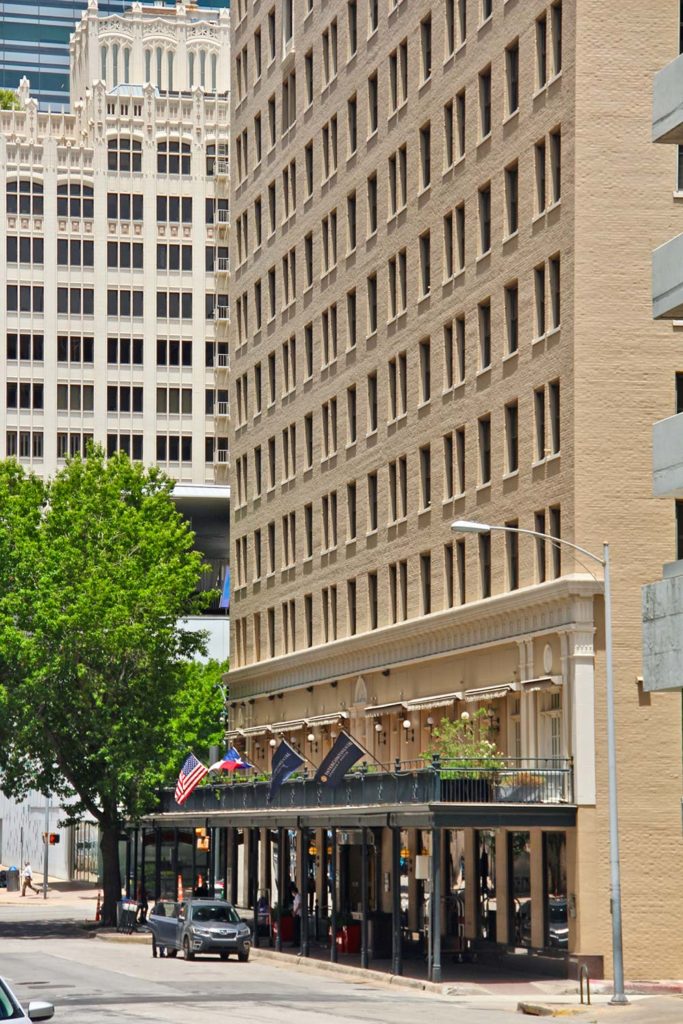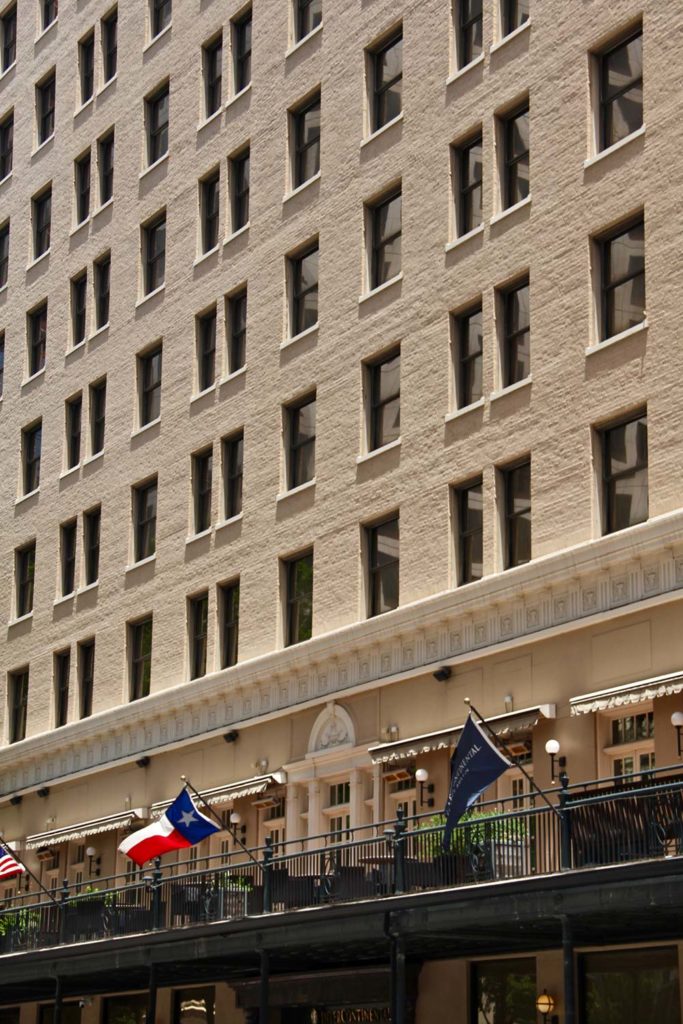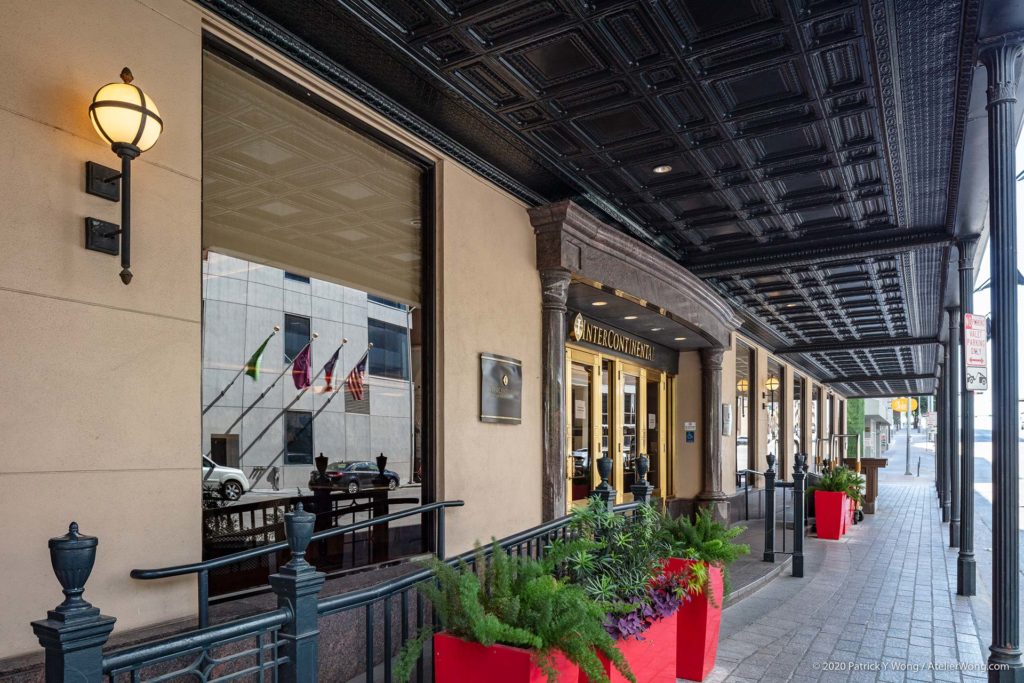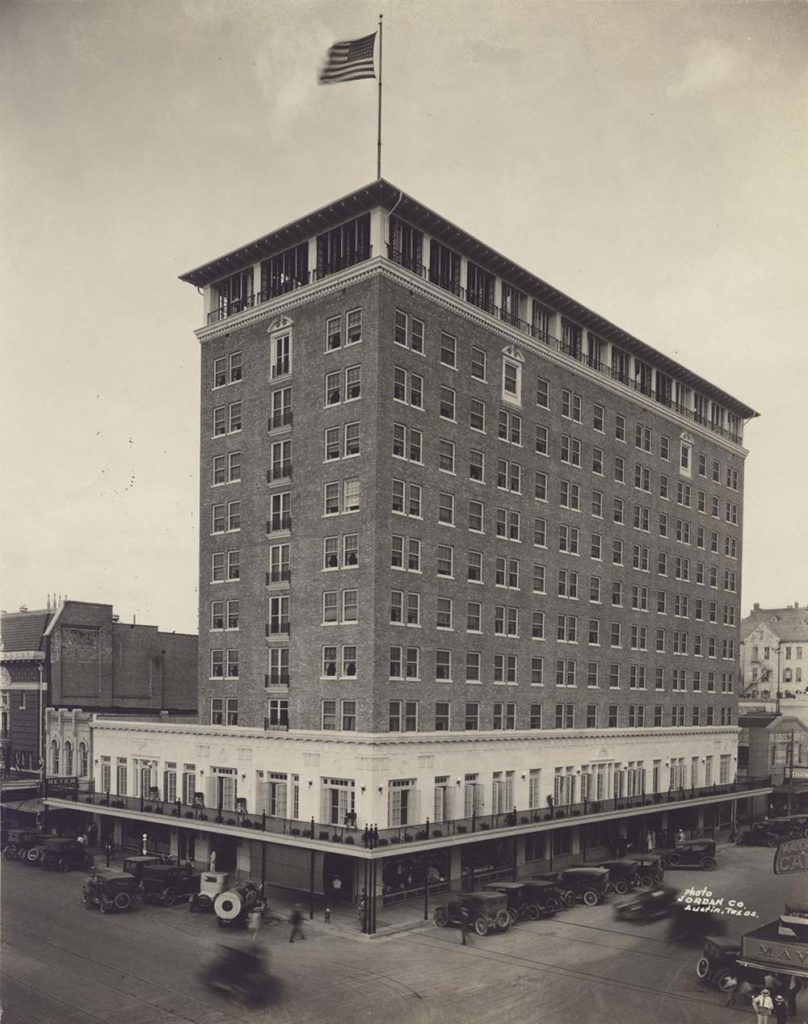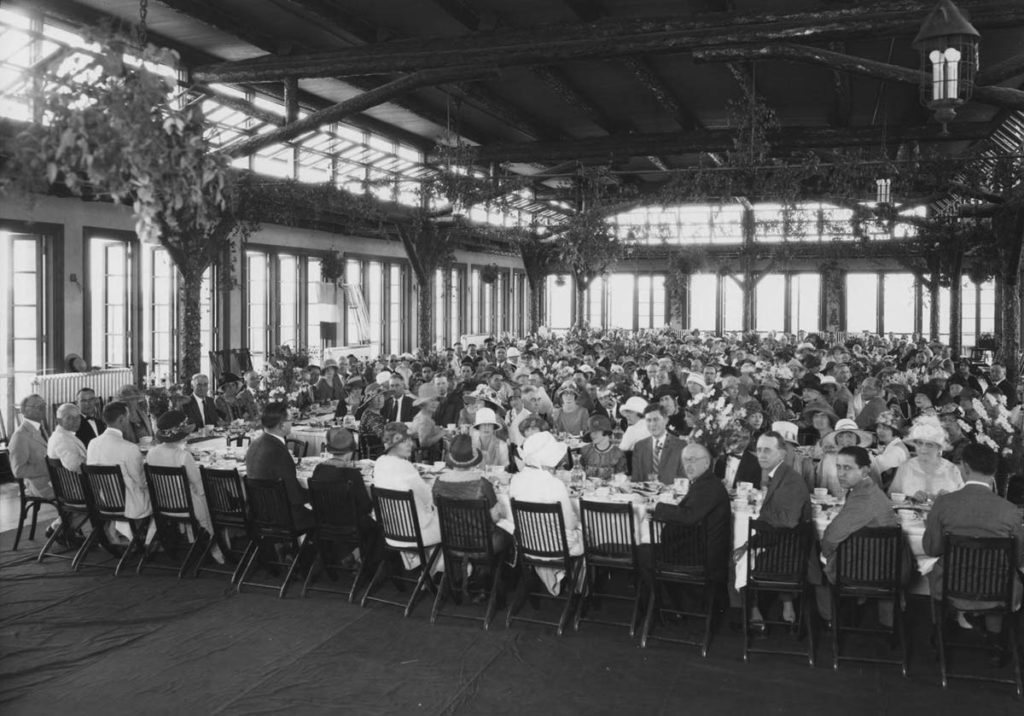Rising 15 stories above Congress Avenue, the dusky brown façade of the Stephen F. Austin Hotel has welcomed guests for almost 100 years. While the hotel suffered a series of careless renovations throughout its history, a turn-of-the-century restoration recaptured its essence. Today, the Stephen F. Austin Hotel is notable for its restrained neoclassical décor and charming sense of southern hospitality.
Capitalizing on the city’s pre-Depression boom, the hotel was Austin’s tallest private building upon its completion in 1924 (only the capitol was taller). Seeing the need for a hotel and conference center, a group of enterprising locals partnered with hotel magnate T.B. Baker to back the project. Baker, a Kansas native whose hotel empire rivaled that of Conrad Hilton at the time, dubbed his new establishment “The Texas” until the townsfolk insisted on something with a bit more local flavor—and what’s more Austin than the “Father of Texas” himself? The original building stood ten stories tall and boasted a rooftop ballroom—called the Longhorn Garden—enclosed by 125 windows and supported by vine-covered beams. The ballroom was demolished in 1938 to make way for a five-story addition that brought the structure to its current height.
While this establishment often draws comparisons to The Driskill (whose 12-story annex can be spotted across 7th Street), its architecture is noticeably more intimate and subdued. Instead of grand stone porticos topped by showy busts, this 190-room retreat meets the street with a spindly veranda that extends the length of the hotel. With its generous upper level shaded by retractable awnings, the veranda is a great spot to do some people watching on a balmy spring day, or share a cold drink on a hot summer night.
Inside, the stately lobby features intricate white marble and plaster ornamentation contrasted by dark wood accents and black metal railings. The original detailing of the lobby—including the grand staircase—was completely destroyed by earlier renovations. Following extensive research, these architectural features were meticulously recreated by skilled artisans utilizing traditional methods. – Bud Franck
